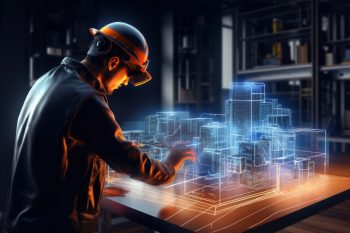

Teoh Tze Ping, Managing Director, KONE Malaysia & Brunei
By Teoh Tze Ping, Managing Director, KONE Malaysia & Brunei
Think about Malaysia’s rapid urbanisation and the complex modern structures rising across the country. The need to revolutionise building safety has never been more urgent.
The intersection of technological advancement and engineering innovation in this transformative era offers unprecedented opportunities to elevate safety standards across our built environment. Among these advancements, Artificial Intelligence (AI) stands out as a key technology, capable of driving predictive maintenance, real-time monitoring, and advanced automation to safeguard buildings and their occupants.
In a scenario where all elevators and escalators in our cities abruptly cease to function, how would we ensure the smooth movement of people? What repercussions would this pose for metro stations, airports, hospitals, and office buildings in our densely populated urban areas?
Across the globe, AI technologies have been harnessed to augment structural health monitoring in diverse infrastructures like buildings, bridges, and roads. In Malaysia, the adoption of AI-driven technologies in buildings aligns with the nation’s ambitions to foster smart cities. Kuala Lumpur, in particular, where smart buildings equipped with interconnected technologies are becoming increasingly prevalent, according to Kuala Lumpur Mayor Datuk Seri Kamarulzaman Mat Salleh.
Smart sensors and IoT devices powered by AI can continuously monitor structural health, detect anomalies, and predict potential failures before they occur. These technologies enable proactive maintenance to improve safety and ensure the longevity of buildings.
Integrating AI into Buildings
Elevators and escalators, critical components of modern high-rise structures, benefit significantly from AI-driven enhancements. By leveraging AI algorithms, these systems can anticipate traffic patterns, minimise waiting times, and alleviate congestion—all while enhancing the overall user experience and operational efficiency.
In high-rise buildings, AI integration ensures smooth and seamless people flow, minimising wait times, reducing congestion and maximising efficiency. This is to ensure effective people flow management within complex-built environments, which is essential for maintaining optimal operations and enhancing the overall user experience. At KONE, we help customers connect elevators, escalators, and automatic building doors to our cloud-based service and use AI-enabled analytics to take people flow to a whole new level.
Predictive Maintenance for Enhanced Safety & Building Value
One key opportunity with AI is the predictive maintenance of elevators. An AI-based predictive maintenance approach allows building owners to continuously analyse elevator performance and risks, reducing breakdowns and enhancing accessibility.
This proactive approach ensures higher safety standards and minimises potential hazards, making buildings safer for all occupants. For instance, KONE 24/7 Connected Services equips all elevators with sensors and state-of-the-art technology, providing extensive data on performance, usage patterns, and potential issues. Depending on the severity of the problem, this system informs building owners by identifying maintenance needs and alerting technicians or customer support.
Through 24/7 monitoring, building owners receive immediate notifications of problems and can plan future maintenance effectively. This continuous flow of information integrating real-time and historical data ensures that issues are addressed promptly, maintains the smooth operation of elevators, and contributes to overall building efficiency. This results in enhanced safety, complete transparency, and peace of mind for consumers.
From a business perspective, AI-powered predictive maintenance offers substantial returns on investment by mitigating risks associated with equipment breakdowns and operational disruptions. According to Deloitte AI Institute Report, avoiding breakdowns can prolong the lifespan of machines and assets, enabling the business to derive greater value from its current investments. AI-based predictive maintenance can prolong the lifetime of equipment by proactively identifying up to 70% of faults, resulting in 44% fewer callouts and reducing unplanned equipment disruption for passengers.
Transitioning to AI & Predictive Maintenance
Transitioning from reactive to predictive maintenance in buildings presents an opportunity for growth. However, many building management teams may encounter challenges due to a need for specialised knowledge in effectively managing and interpreting data from advanced predictive maintenance technologies.
To bridge this gap, partnering with specialised service providers who can offer the expertise required can be a viable solution. Companies like KONE are at the forefront of this transformation, offering AI-powered vertical transportation solutions designed to optimise efficiency and elevate user experiences to new heights.
The data and information provided directly integrate serviced equipment into building management systems. Not to mention, KONE also works with reputable partners to scale up their digital services for smart buildings. By leveraging global cloud solutions like IoT, analytics, and cybersecurity through these partnerships, the company strengthens its defences and ensures the security of its smart building technologies.
As Malaysia continues its journey towards urbanisation and sustainable development, the integration of AI in building safety and maintenance will play an increasingly pivotal role.
AI technologies enable streamlined operations, reduced energy consumption, and enhanced passenger experiences within elevators and escalators. By adopting these innovative technologies, building owners can future-proof their properties, ensuring they remain attractive and efficient in meeting the evolving needs of tenants and residents alike.
 (0)
(0) (0)
(0)Archive
- October 2024(44)
- September 2024(94)
- August 2024(100)
- July 2024(99)
- June 2024(126)
- May 2024(155)
- April 2024(123)
- March 2024(112)
- February 2024(109)
- January 2024(95)
- December 2023(56)
- November 2023(86)
- October 2023(97)
- September 2023(89)
- August 2023(101)
- July 2023(104)
- June 2023(113)
- May 2023(103)
- April 2023(93)
- March 2023(129)
- February 2023(77)
- January 2023(91)
- December 2022(90)
- November 2022(125)
- October 2022(117)
- September 2022(137)
- August 2022(119)
- July 2022(99)
- June 2022(128)
- May 2022(112)
- April 2022(108)
- March 2022(121)
- February 2022(93)
- January 2022(110)
- December 2021(92)
- November 2021(107)
- October 2021(101)
- September 2021(81)
- August 2021(74)
- July 2021(78)
- June 2021(92)
- May 2021(67)
- April 2021(79)
- March 2021(79)
- February 2021(58)
- January 2021(55)
- December 2020(56)
- November 2020(59)
- October 2020(78)
- September 2020(72)
- August 2020(64)
- July 2020(71)
- June 2020(74)
- May 2020(50)
- April 2020(71)
- March 2020(71)
- February 2020(58)
- January 2020(62)
- December 2019(57)
- November 2019(64)
- October 2019(25)
- September 2019(24)
- August 2019(14)
- July 2019(23)
- June 2019(54)
- May 2019(82)
- April 2019(76)
- March 2019(71)
- February 2019(67)
- January 2019(75)
- December 2018(44)
- November 2018(47)
- October 2018(74)
- September 2018(54)
- August 2018(61)
- July 2018(72)
- June 2018(62)
- May 2018(62)
- April 2018(73)
- March 2018(76)
- February 2018(8)
- January 2018(7)
- December 2017(6)
- November 2017(8)
- October 2017(3)
- September 2017(4)
- August 2017(4)
- July 2017(2)
- June 2017(5)
- May 2017(6)
- April 2017(11)
- March 2017(8)
- February 2017(16)
- January 2017(10)
- December 2016(12)
- November 2016(20)
- October 2016(7)
- September 2016(102)
- August 2016(168)
- July 2016(141)
- June 2016(149)
- May 2016(117)
- April 2016(59)
- March 2016(85)
- February 2016(153)
- December 2015(150)
